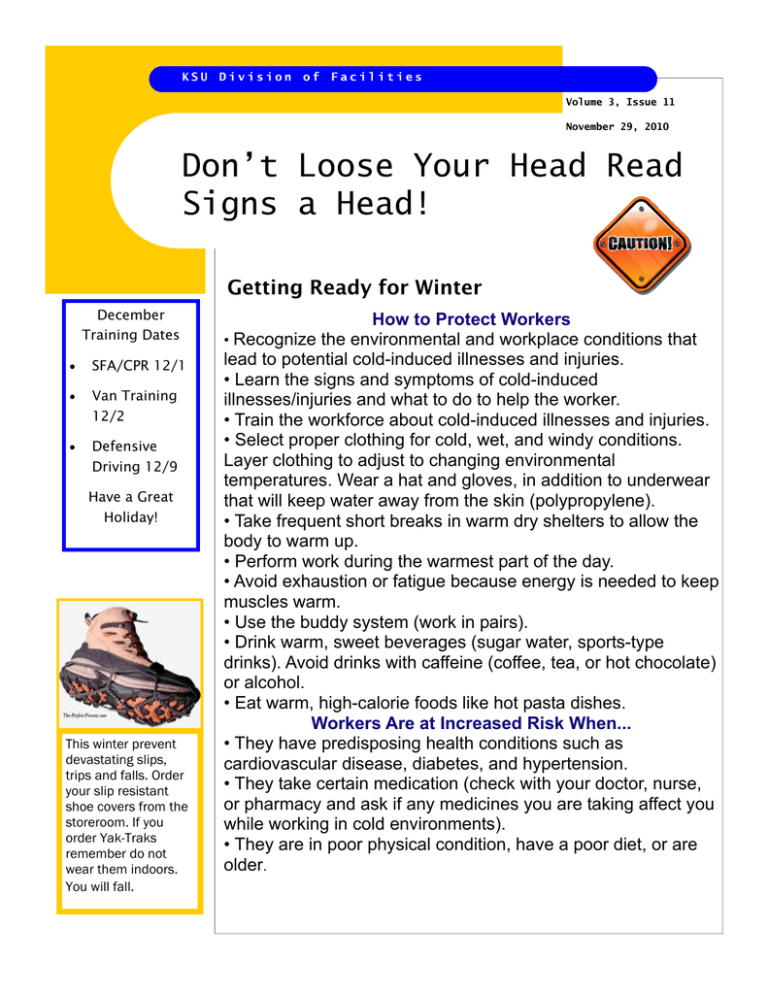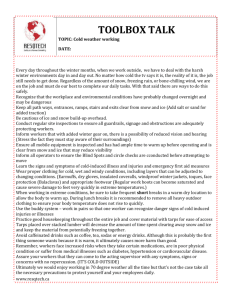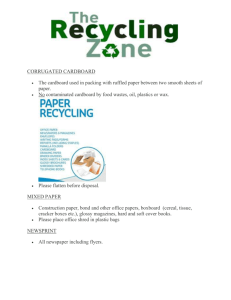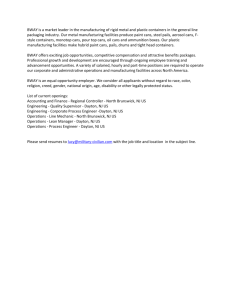Don’t Loose Your Head Read Signs a Head! Getting Ready for Winter
advertisement

KSU Division of Facilities Volume 3, Issue 11 November 29, 2010 Don’t Loose Your Head Read Signs a Head! Getting Ready for Winter December Training Dates • SFA/CPR 12/1 • Van Training 12/2 • Defensive Driving 12/9 Have a Great Holiday! This winter prevent devastating slips, trips and falls. Order your slip resistant shoe covers from the storeroom. If you order Yak-Traks remember do not wear them indoors. You will fall. How to Protect Workers • Recognize the environmental and workplace conditions that lead to potential cold-induced illnesses and injuries. • Learn the signs and symptoms of cold-induced illnesses/injuries and what to do to help the worker. • Train the workforce about cold-induced illnesses and injuries. • Select proper clothing for cold, wet, and windy conditions. Layer clothing to adjust to changing environmental temperatures. Wear a hat and gloves, in addition to underwear that will keep water away from the skin (polypropylene). • Take frequent short breaks in warm dry shelters to allow the body to warm up. • Perform work during the warmest part of the day. • Avoid exhaustion or fatigue because energy is needed to keep muscles warm. • Use the buddy system (work in pairs). • Drink warm, sweet beverages (sugar water, sports-type drinks). Avoid drinks with caffeine (coffee, tea, or hot chocolate) or alcohol. • Eat warm, high-calorie foods like hot pasta dishes. Workers Are at Increased Risk When... • They have predisposing health conditions such as cardiovascular disease, diabetes, and hypertension. • They take certain medication (check with your doctor, nurse, or pharmacy and ask if any medicines you are taking affect you while working in cold environments). • They are in poor physical condition, have a poor diet, or are older. Page 2 Does your Gas Can meet OSHA requirements? Recently, when I went on vacation, while I was flying, I sat next to a lady from Kansas City who was an attorney. During the conversation she explained that she specialized in burn victims that were burned from using non-approved safety gas cans. She told story after story about the victims and their families, the extreme pain, suffering and loss of life involved when burned. It was a critical reminder that as an organization we need to provide our workers with appropriate safety gas cans. If you are using this type pictured they are not approved: ALERT Recent Report Needles found in trash can at KSU. Be Careful! OSHA Standard 29 CFR 1926.152(a)(1) states: only approved containers and portable tanks shall be used for storage and handling of flammable and combustible liquids. Approved safety cans are metal closed containers of no more than 5 gallon capacity, having a flash arresting system, spring closing lid and spout cover and so designed that it will safely relieve internal pressure when subject to fire exposure. Check yours today. Does it meet code? Please note: I released the above OSHA requirement in the September 2009 Safety Bulletin. I am concerned because I still finding unapproved gas cans being used in departments. Thank You to Steve Greinke and his crew for safely handling the situation.




